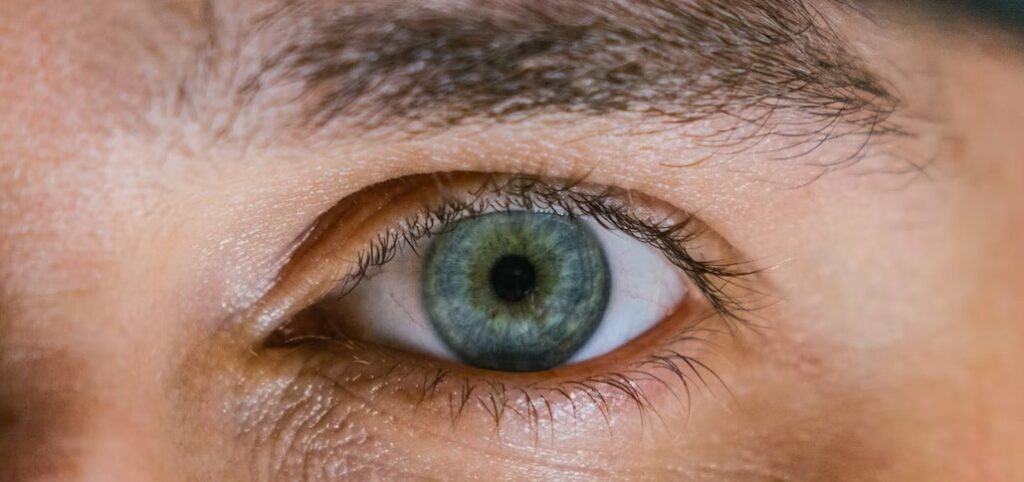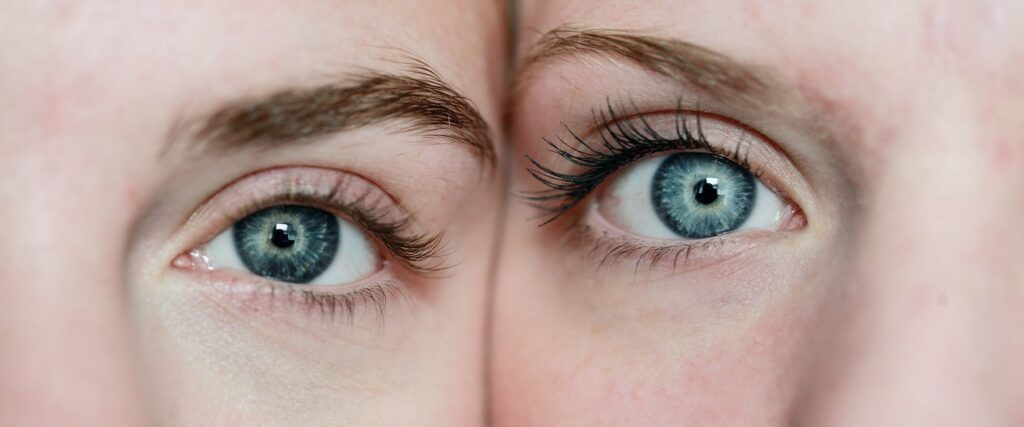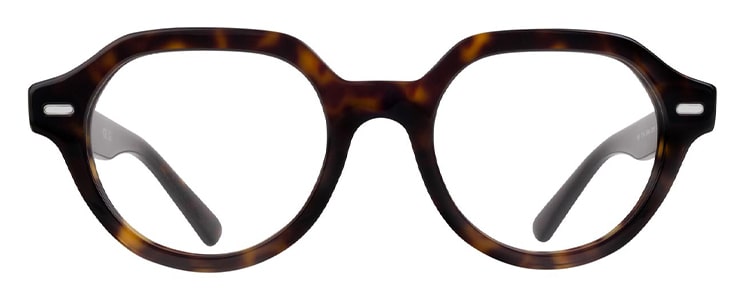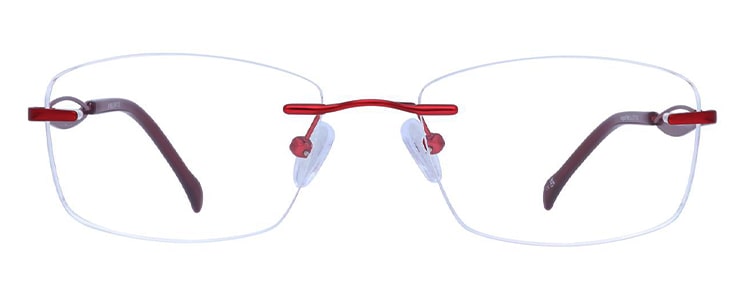Do you have a pair of baby blues? Admired for their beauty, blue eyes have long been one of the most desirable eye colours. Often associated with innocence, calm, and trust, they’re the second most common eye colour across the globe, despite the fact that only around 10% of the world has this distinctive shade. But how do blue eyes really form, and what does your eye colour say about your genetics and health? Let’s take a closer look.
How do blue eyes get their colour?
The colour of your eyes depends on the amount of melanin produced within the front part of the eye, particularly in the iris. Melanin is a brown pigment that also defines your hair colour and skin colour.
For most people, the back layer of the iris contains brown pigment. The front layer, known as the stroma, is a transparent tissue filled with proteins such as collagen. People with a blue eye colour have little to no pigment in the front layer of the iris, which means there’s no actual colour to absorb light. Instead, the collagen fibres in the iris scatter shorter wavelengths of light, such as blue, and absorb longer wavelengths like red and yellow. This phenomenon, known as Rayleigh scattering, reflects more blue light back out, just as it does in the sky, making the eyes appear blue.
In reality, blue eyes are essentially colourless; it’s the lack of pigment that tricks our eyes into seeing blue.

Different shades of blue eyes
Eye colour exists on a spectrum. Some individuals have light blue eyes, others a dark blue or even a violet tint. There are also combinations such as hazel-blue or bluey-green eyes, where melanin levels vary across the iris.
Hazel eyes, for example, can display areas of brown, amber, or green, depending on how light interacts with the melanin. The amount of pigment and the way light scatters together create a vast range of different colours.
Blue vs grey eyes
Though similar at first glance, blue and grey eyes differ at the structural level. People with grey eyes have more collagen in the stroma, which reflects light differently and gives the eyes a silvery-grey appearance. Grey eyes are also among the rarest eye colours in the world.
How is eye colour inherited?
Eye colour inheritance is more complex than once believed. It was thought to be a simple genetic trait passed down directly from your parents’ eyes, but we now know it’s influenced by multiple different genes—notably OCA2 and HERC2, both located on chromosome 15.
These genes control the amount and distribution of melanin in the iris. For a child’s eyes to be blue, both parents usually need to pass along the recessive blue-eye gene, though they may not have this eye colour themselves.
Even two blue-eyed individuals can have a child with dark brown eyes if other dominant alleles are involved, illustrating just how intricate genetic inheritance can be.

Do all blue-eyed people have a common ancestor?
Interestingly, genetic research suggests that all blue-eyed people share a common ancestor. Scientists at the University of Copenhagen discovered that a single genetic mutation in the OCA2 gene occurred roughly 6,000–10,000 years ago in an individual from south-eastern Europe.
This genetic mutation reduced melanin production in the iris, giving rise to the first blue eyes. As populations migrated, this mutation spread across continents. So yes, if you have blue eyes, you may be distantly related to every other person with this eye colour!
Are all babies born with blue eyes?
It’s a popular belief that all babies are born with blue eyes, but that’s not entirely true. Eye colour in babies varies, often depending on genetic background. Many newborns have lighter eyes because melanin levels in their iris are still developing.
As melanin increases over time, a baby’s eye colour can shift—sometimes from blue to green, amber, or brown eyes. This changes commonly happen during early childhood.
Are people with blue eyes more prone to health risks?
From an ophthalmology perspective, melanin plays a vital role in protecting the layer at the back of the eye known as the retina, as well as other parts of the eye, from UV rays. Because light eyes like blue, grey, or green contain less melanin, they may be at a higher risk of certain eye conditions.
Blue-eyed people are more sensitive to bright light and have an increased chance of developing age-related macular degeneration (AMD) and cataracts due to sun damage. There’s also evidence suggesting a link between light iris colour and uveal melanoma, a rare type of eye cancer that affects the layer of the iris and other internal structures.
That’s why eye care is especially important—wear appropriate eyewear like sunglasses with 100% UVA/B protection, avoid prolonged sun exposure, and schedule regular eye tests to monitor eye health.
What colour glasses suit my eyes?
Your eye colour can beautifully complement your overall look. Here are some of the best frame choices for blue-eyed people:
- Grey, silver, and blue frames bring out the natural sparkle
- For a subtler finish, try black or dark tortoiseshell glasses
- Create striking contrast with red or orange frames which will make your eyes pop!
Final Thoughts
Whether you have amber eyes, blue, hazel, or dark brown, each shade tells a unique genetic story. From the OCA2 and HERC2 genes to ancient chromosomal mutations, eye colour reveals fascinating details about our evolution and ancestry.
Whatever your eye colour, taking care of your eyes is essential. Prioritise regular eye exams, protect your retina from UV light, and celebrate the distinctive colour that makes your gaze one-of-a-kind.








